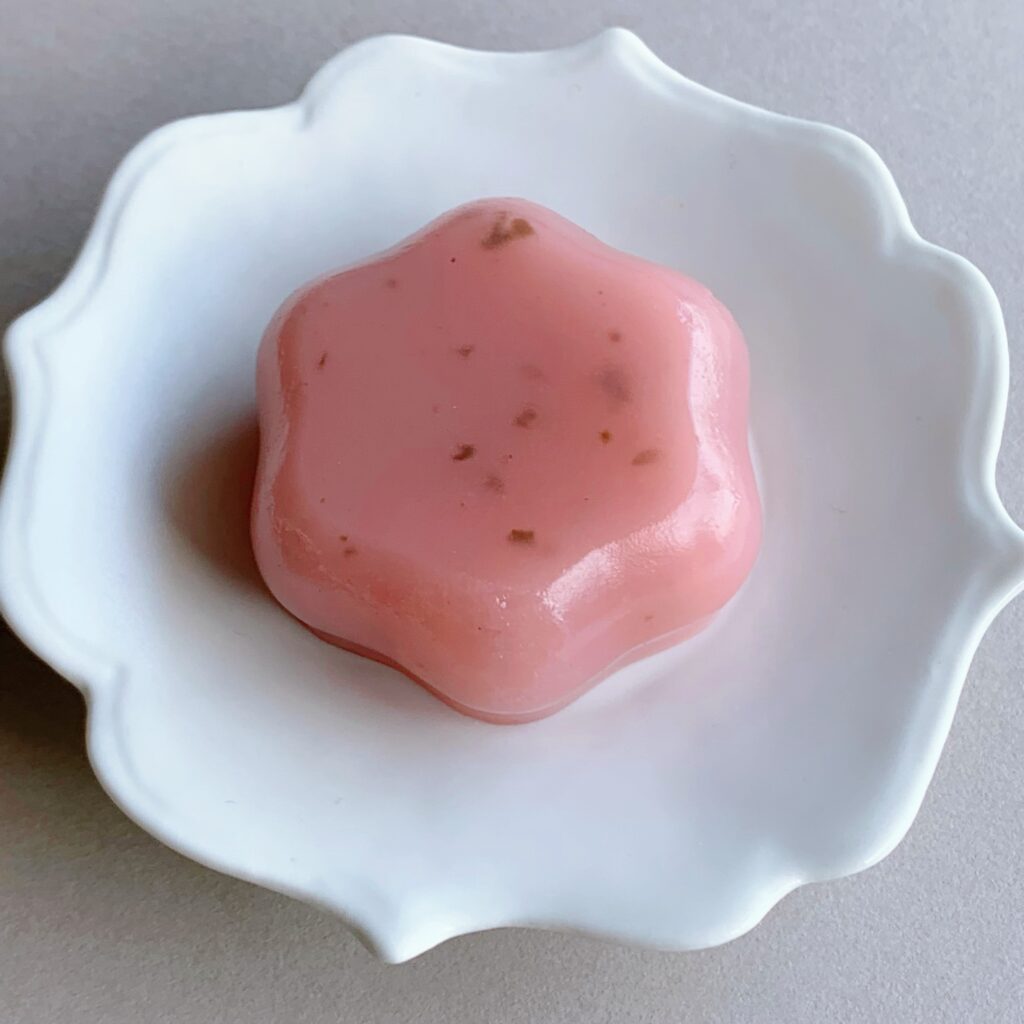
Sakura youkan(さくら羊羹)
yokan = Japanese jelly sakura = cherry blossom anko = red bean paste azuki = red beans
A Japanese sweet with a gorgeous cherry blossom scent and a subtle salty taste.
Yokan is made by mashing red bean paste (azuki bean paste) and solidifying it using kanten.
Mizuyokan is made by adding water to the red bean paste before it is solidified using kanten, which gives it a high moisture content and soft texture.
Normally, kanten is used for yokan, but this recipe uses gelatin to give it a gentler texture.
Ingredients for anko
- anko : red azuki beans and sugar
- sakura an : shiro-an(white bean paste) and salted cherry blossoms
- shiro-an : white kidney beans and white azuki beans

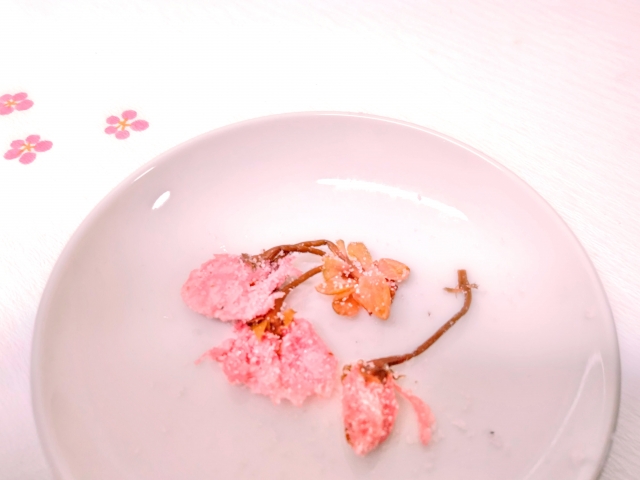
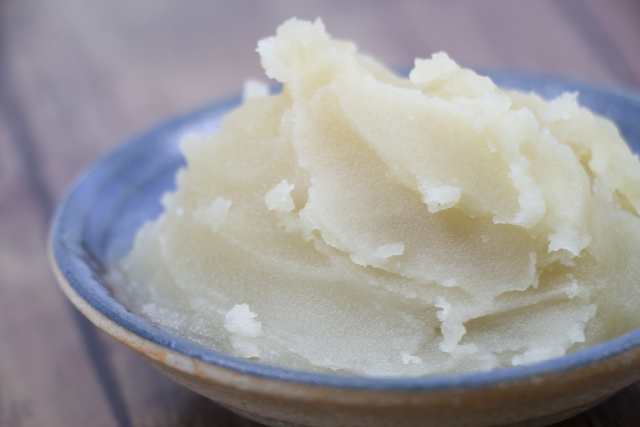
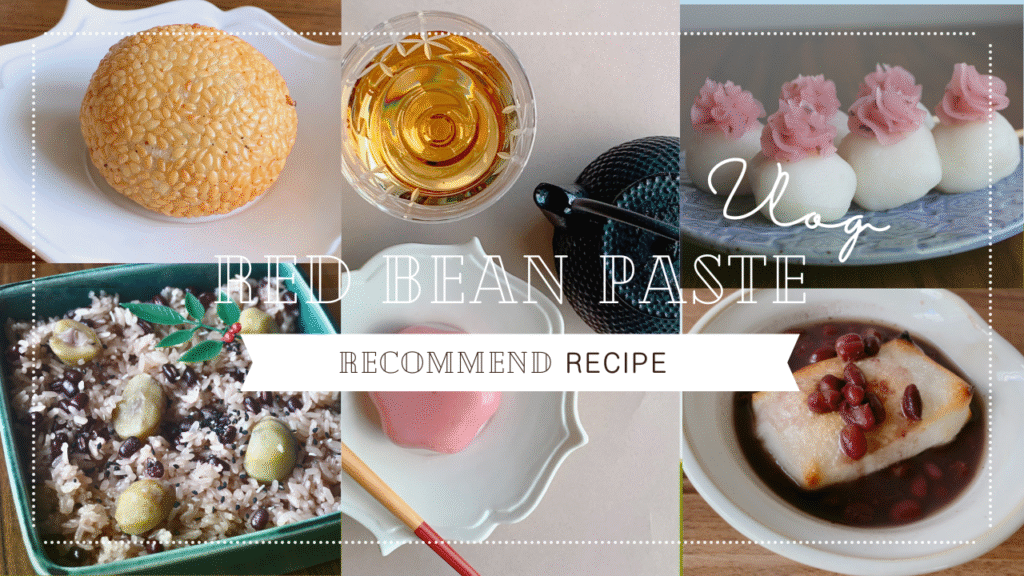
How to use gelatin
Normally, 5g(2%) of powdered gelatin is used for 250ml to 300ml of solution.
It can be added directly to warmed milk or bean paste, but when adding it to unheated juices, it should be dissolved in hot water first.
If the juice is too cold, lumps may form when you add the gelatin.
You can minimize the risk of failure by dissolving the gelatin in a small amount of solution first and adding it while filtering.
If any lumps occur, try heating them in the microwave for a bit to melt them.
Gelatin dissolves at temperatures above 60 degrees, so use a solution around 70 degrees. Do not boil the solution after adding it, as high heat will denature the gelatin protein and make it difficult to solidify.
Also, the solidified jelly will melt at temperatures above 25 degrees, so store it in the refrigerator.
Raw pineapple and kiwifruit contain proteolytic enzymes that inhibit gelatin from turning into jelly. Acids like lemon and yogurt break down gelatin. Jelly made with these materials does not harden easily. Avoid heating these foods with gelatin and mix them in afterwards.
Difference Between Agar and kanten

The amount of gelling agent used will vary depending on the type of product and solution.
There are three types of gelling agents: gelatin, agar, and kanten. In English, both kanten and agar are written as agar, which can be confusing, but kanten and agar are different coagulants.
Also, the texture of jellies and yokan changes depending on the coagulant used. The coagulation power of agar is about five times that of gelatin and two to three times that of agar.
- Yokan made with kanten will fall apart in your mouth when you bite into it.
- Jelly made with gelatin will melt in your mouth.
- Yokan and jellies made with agar will not melt in your mouth but will have a soft and smooth texture.
I decide the amount of gelling agent to use based on the amount of liquid to be used.
- Making coffee jelly
- Black coffee (500g)
- Sugar (60g)
- Gelatin (10g)… (2% of the amount of water)
- Making yokan
- Anko (250g)
- Water (250g)
- Gelatin (5g)… (2% of the amount of water)
- Making juice jelly
- Juice (400g)
- Sugar (40g)
- Hot water (100g)
- Gelatin… (2% of the amount of water + juice)

NUTRITION FACTS of Sakura Yokan Jelly

- 1115 Calories Protein 35.3 g Total Fat 2.5 g Total Carbohydrates 288.5 g Sodium 1.1 g
INGREDIENTS for Sakura Yokan Jelly
- Sakura an 500g
- Water 500g
- Gelatin 10g
Sakura Yokan Jelly COOKING INSTRUCTIONS
- Mix water, sakura an (white bean paste containing salted cherry blossoms) and gelatin thoroughly.
- Heat over medium heat and turn off heat at 80℃. (Do not boil as the liquid will not solidify.) Stir with a spatula as needed while heating to prevent burning.
- Pour the liquid into the mold.
- Pour ice water into a large pot and place the mold in it.
- Cool to about 35℃. Stir occasionally with a spoon while cooling. This step is very important to prevent the moisture and bean paste from separating.
- Chill in the refrigerator for half a day.
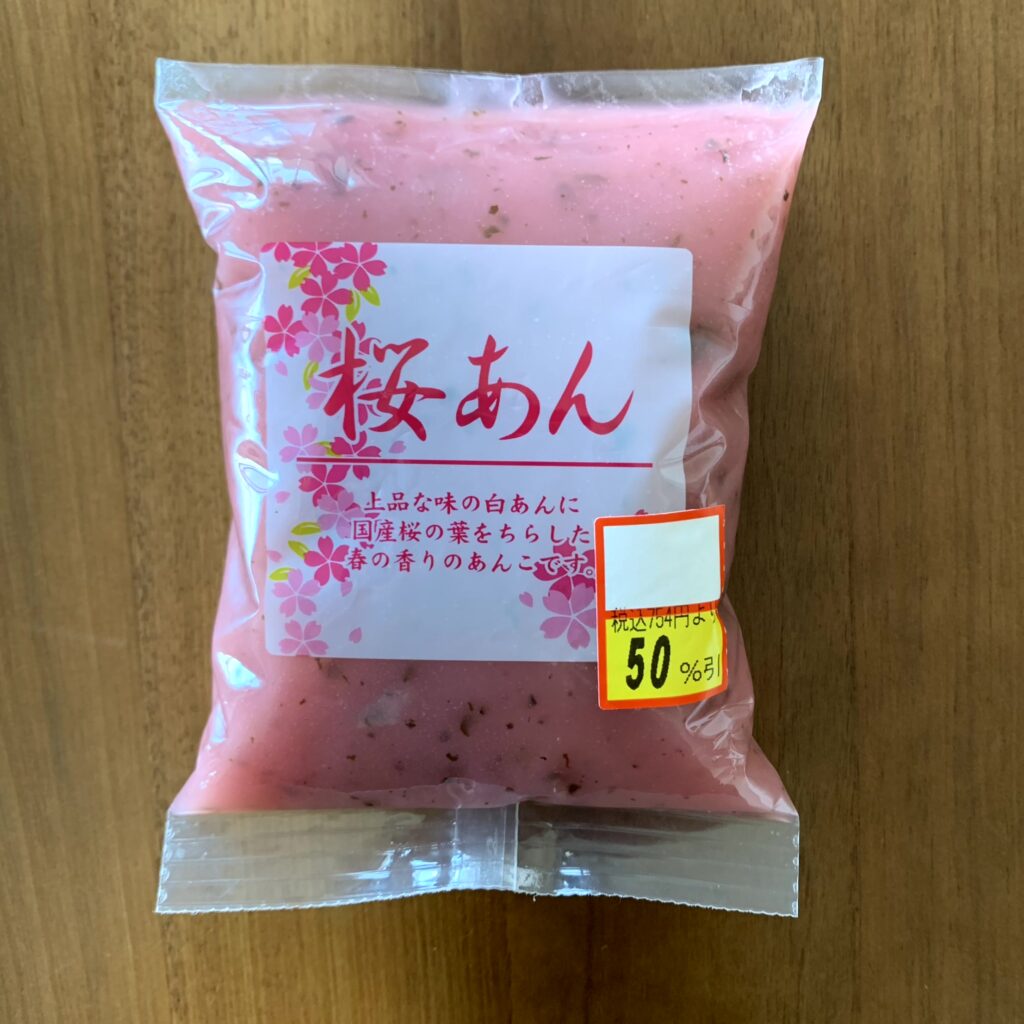
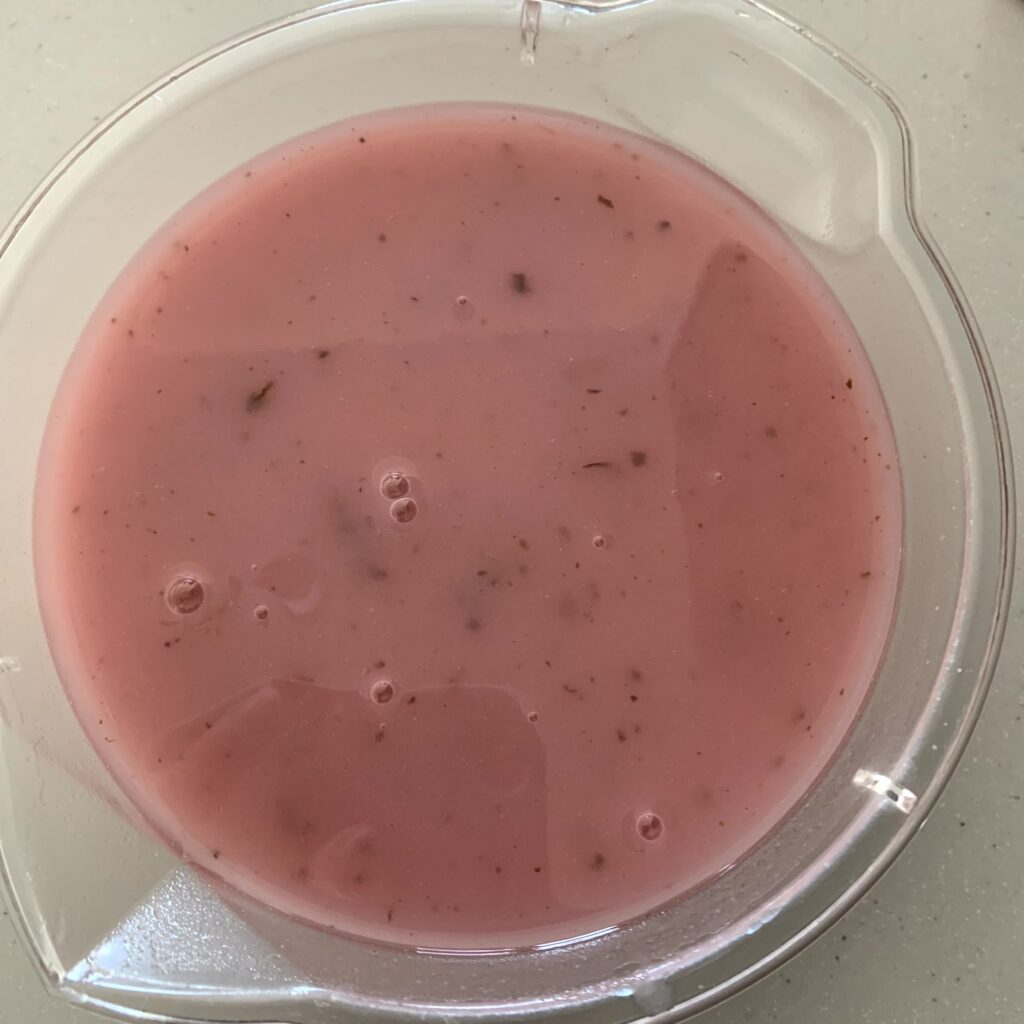
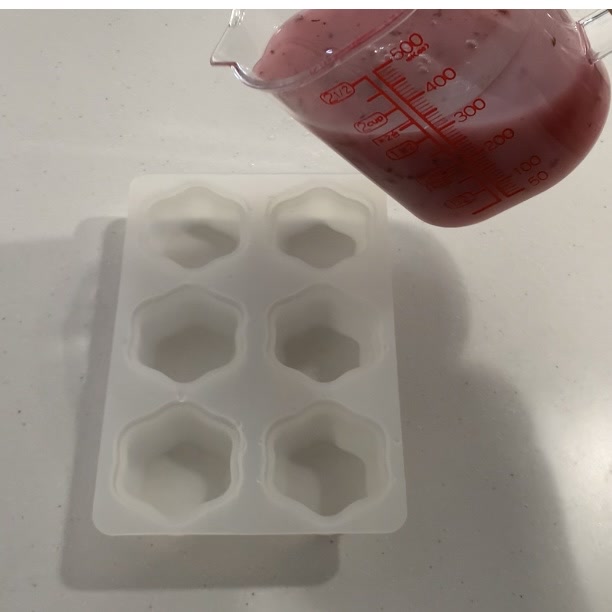
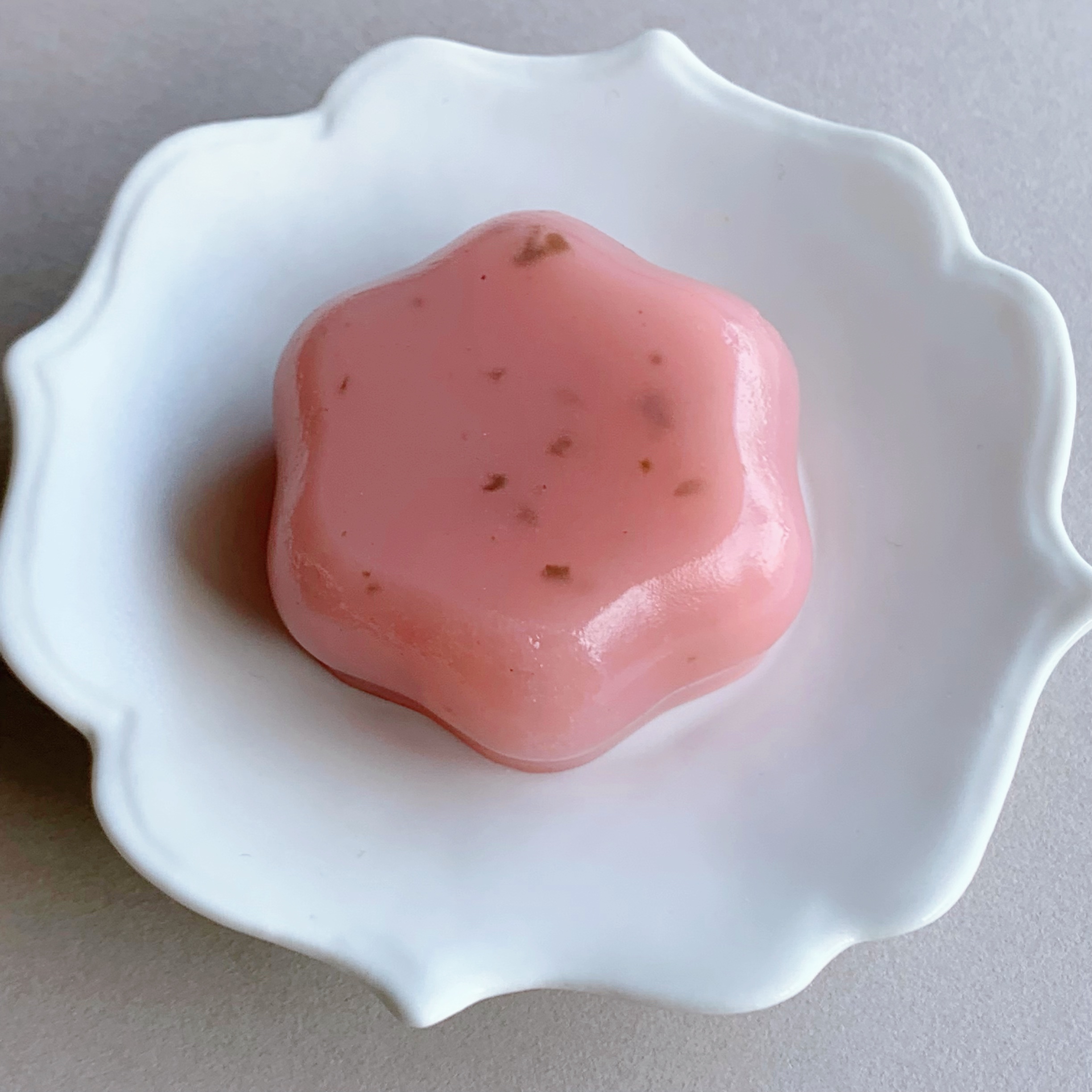


コメント